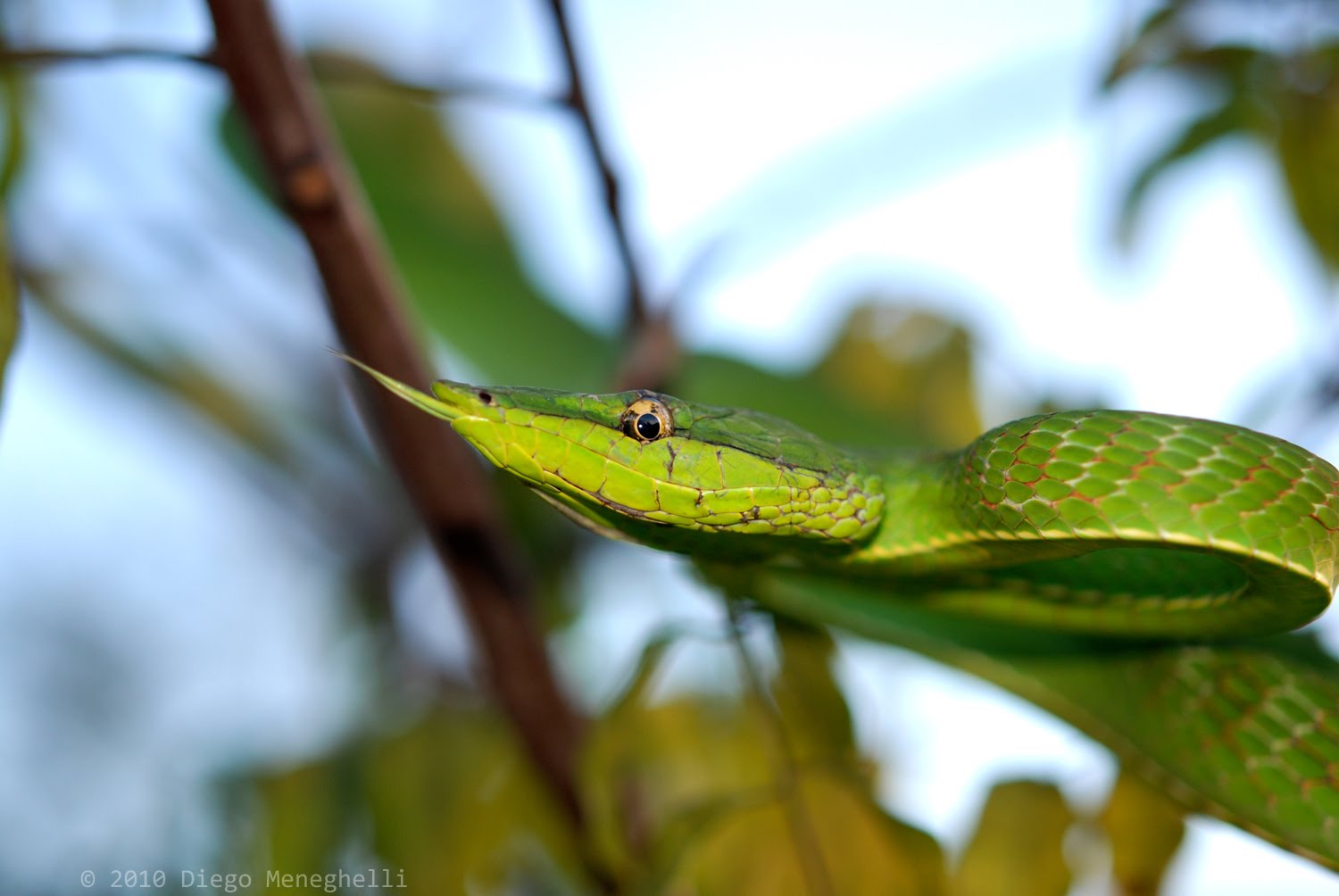In the dense, verdant rainforests of Southeast Asia lurks one of nature’s most remarkable masters of disguise. The Asian vine snake, specifically the species known as Ahaetulla prasina, possesses an extraordinary ability that seems almost magical—it can flatten its body to mimic the appearance of a leaf. This remarkable adaptation represents one of the most sophisticated examples of camouflage in the animal kingdom. Unlike most snakes that rely on patterns or coloration to blend into their surroundings, the vine snake physically transforms its shape, creating an illusion so perfect that even seasoned researchers can walk right past without noticing these serpentine illusionists. This fascinating creature challenges our understanding of animal adaptations and offers a glimpse into the incredible evolutionary arms race between predator and prey.
The Remarkable Vine Snake: An Introduction

The Asian vine snake (Ahaetulla prasina) belongs to the Colubridae family, the largest family of snakes comprising about two-thirds of all known snake species. These slender arboreal hunters make their home primarily in the tropical forests of Southeast Asia, stretching from India through Indonesia and the Philippines. Their extraordinary body shape—extremely thin and elongated with a pointed snout—already predisposes them to resemble vines or branches, but their leaf-mimicking ability takes this camouflage to an entirely different level. With adults typically growing between 1.5 to 2 meters in length yet maintaining a body diameter of just a few centimeters, these snakes possess the perfect proportions for their remarkable shape-shifting trick. Their vibrant green coloration, which can sometimes appear in yellow or brown variants, completes the convincing disguise that has helped them survive for millions of years.
The Mechanics of Leaf Mimicry
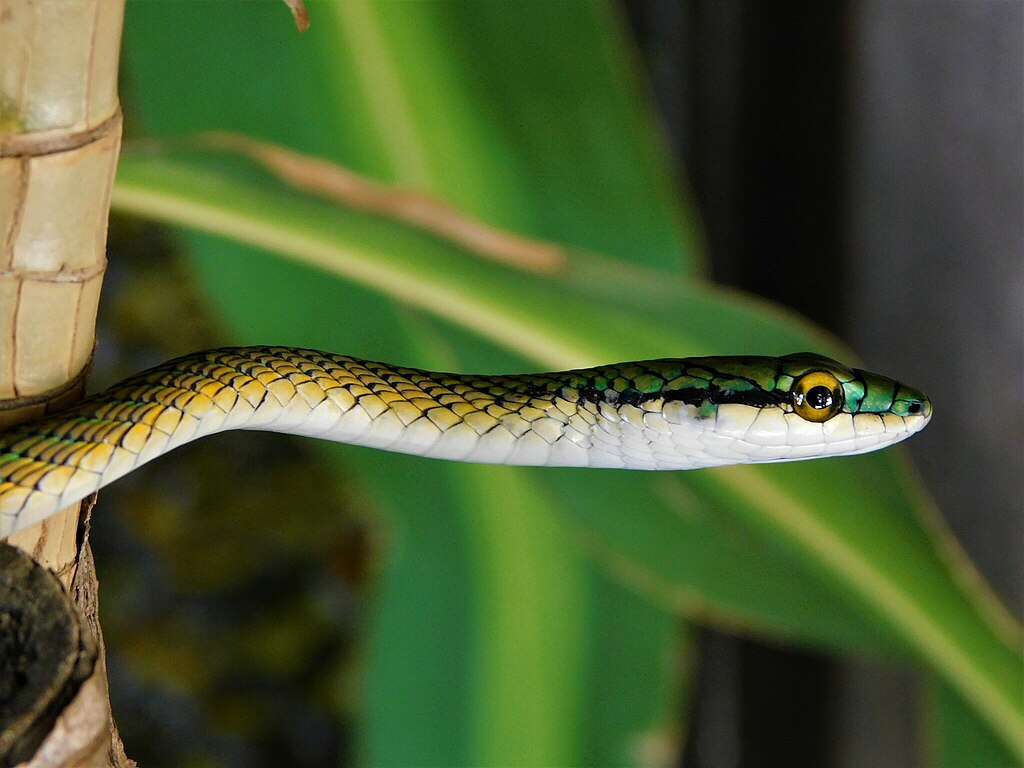
The vine snake’s transformation into a leaf-like form involves a fascinating physiological process. When threatened or hunting, the snake can dramatically flatten the middle portion of its body by spreading its ribs outward while simultaneously contracting specific muscle groups that run along its length. This controlled manipulation creates a leaf-shaped profile with a distinct midrib-like ridge running down the center, astonishingly similar to many tropical leaves. The snake’s keeled scales—scales with raised ridges—enhance this illusion by creating texture that resembles leaf veins when light passes across its body. Perhaps most impressive is the snake’s ability to hang motionless from branches in this flattened position, sometimes for hours, swaying gently as if it were merely a leaf caught in a light breeze. This combination of shape, color, texture, and behavior creates one of the most complete and convincing disguises in the reptile world.
Evolutionary Development of Shape-Shifting
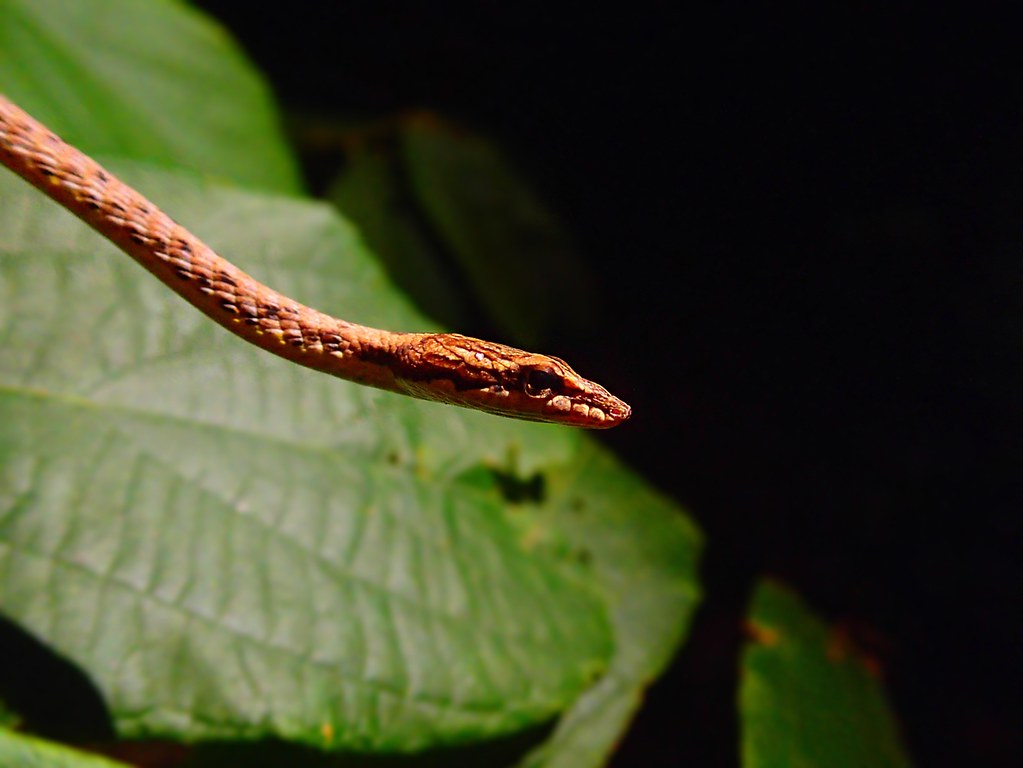
The vine snake’s remarkable ability to flatten its body didn’t develop overnight but rather represents millions of years of evolutionary refinement. Scientists believe this adaptation emerged through intense selective pressure in environments where visual predators like birds posed significant threats. Those ancestral vine snakes with even slightly flattened bodies or slightly more flexible ribs gained survival advantages, with natural selection gradually enhancing these traits over countless generations. Comparative studies with related species show a progression of this ability, with some relatives showing partial flattening capabilities while the Ahaetulla genus has perfected the technique. Interestingly, this trait evolved independently in a few other snake species in different parts of the world, demonstrating what biologists call convergent evolution—where similar environmental pressures lead to similar adaptations in unrelated organisms. The anatomical specializations required for this ability, including modified ribs and unique muscular arrangements, represent an elegant example of evolution’s capacity to craft specialized solutions to survival challenges.
Hunting Tactics of the Leaf-Mimicking Predator

The vine snake’s leaf disguise serves a dual purpose, functioning not just as defense but as an offensive hunting strategy as well. These snakes are primarily diurnal hunters that specialize in capturing birds, lizards, frogs, and sometimes small mammals. Using their flattened posture, they remain perfectly still on branches or among foliage, often positioned along paths frequently traveled by potential prey. When an unsuspecting victim approaches within striking distance, the snake launches forward with remarkable speed, its long body uncoiling like a spring to cover surprising distances. Unlike many snakes that rely on constriction, vine snakes possess mild venom delivered through enlarged rear fangs, using a chewing motion to work the toxin into their prey. Their specialized elongated heads feature binocular vision—a rarity among snakes—with horizontally elongated pupils that provide excellent depth perception, allowing them to precisely judge striking distances while maintaining their convincing leaf disguise until the very moment of attack.
A Visual System Unlike Other Snakes

The vine snake possesses one of the most specialized visual systems in the snake world, perfectly complementing its leaf-mimicking abilities. Unlike most snakes with laterally positioned eyes, vine snakes have forward-facing eyes that provide stereoscopic vision and depth perception crucial for an ambush predator that needs to accurately judge distances. Their horizontal, keyhole-shaped pupils are another unique adaptation, expanding their horizontal field of view while limiting vertical vision—ideal for detecting movement across branches in their arboreal habitat. Research has shown that vine snakes can see color, another unusual trait among snakes, which likely helps them match their surroundings more effectively when adopting their leaf disguise. Their eyes contain a high concentration of cone cells that are sensitive to the green wavelengths predominant in their forest habitat, allowing them to better blend with and navigate through their leafy environment. This sophisticated visual system represents a perfect evolutionary complement to their physical leaf-mimicking capabilities.
Geographic Distribution and Habitat Preferences
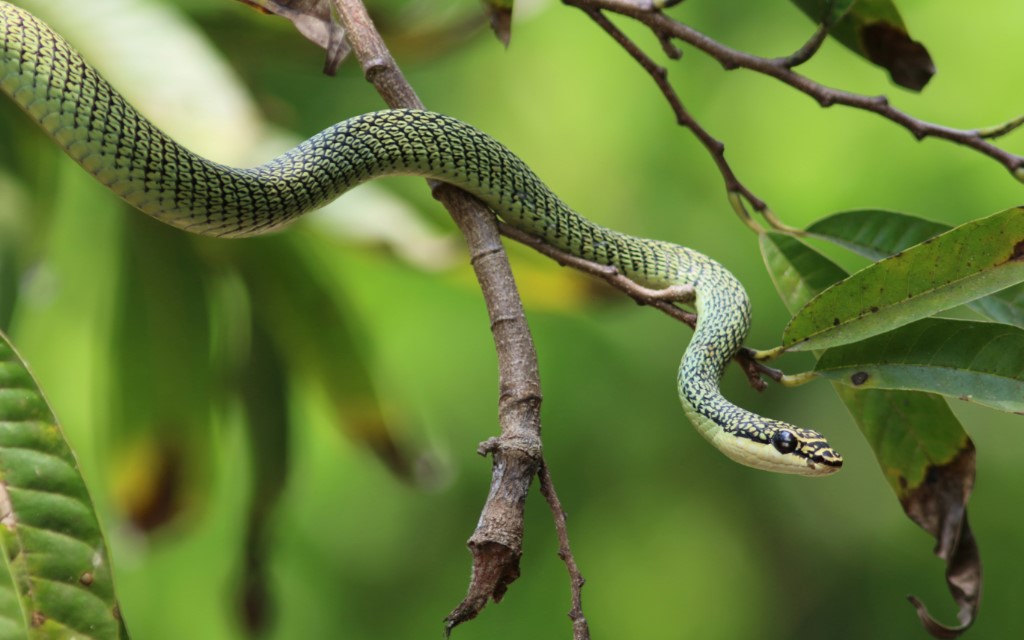
The leaf-mimicking vine snakes of the Ahaetulla genus are widely distributed throughout tropical Asia, with different species occupying specific regions from India and Sri Lanka eastward through Southeast Asia to the Philippines and Indonesia. The most studied species, Ahaetulla prasina (the Asian vine snake), has the widest distribution and demonstrates remarkable adaptability across various forest types. These snakes show a strong preference for humid tropical environments with dense vegetation, where their leaf disguise functions most effectively among the abundance of similar-shaped foliage. They typically inhabit the middle canopy layers of forests, preferring heights of 3-10 meters above ground where branches provide both hunting opportunities and escape routes. Interestingly, different populations have adapted to specific local environments, with some inhabiting mangrove forests along coastlines while others thrive in mountainous regions up to 2,000 meters in elevation. Their distribution patterns closely follow the tropical broadleaf forest ecosystems of Asia, highlighting how specialized their adaptations are to these particular environments.
Subtle Variations Between Species
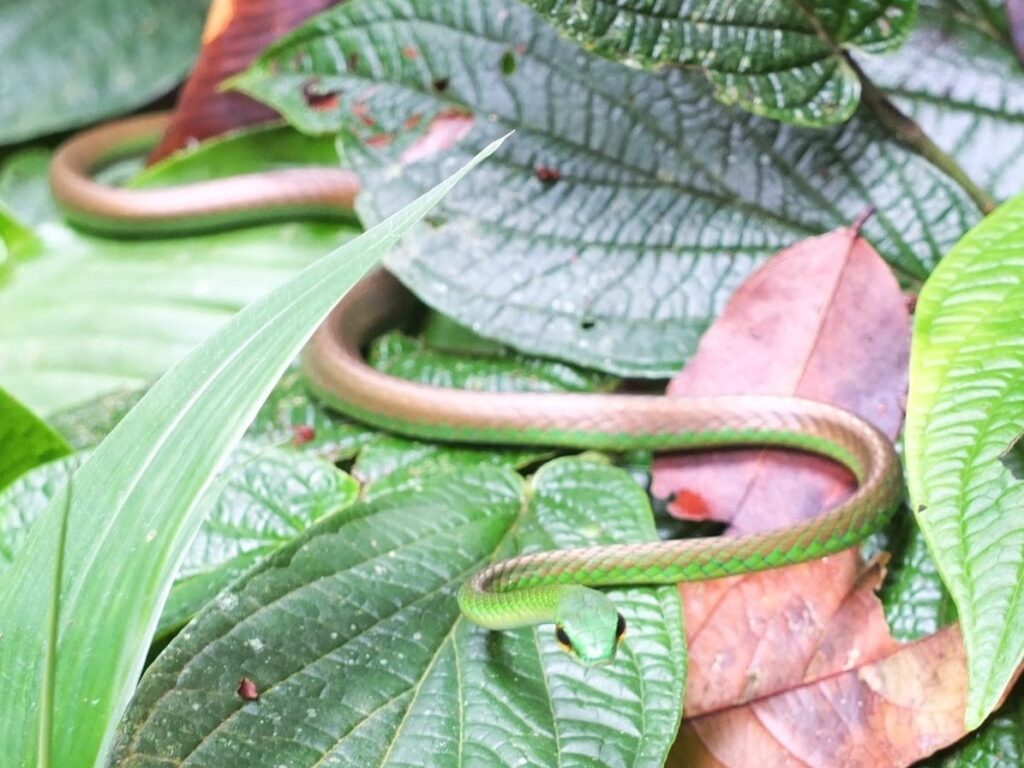
The Ahaetulla genus comprises approximately 15 recognized species, each exhibiting variations on the leaf-mimicking theme. While Ahaetulla prasina represents the most widespread and studied species, others like A. nasuta (the Long-nosed Vine Snake) and A. pulverulenta (the Brown Vine Snake) display fascinating adaptations suited to their specific habitats. The differences between species often manifest in coloration, with some specialized for bamboo forests showing yellowish hues, while others inhabiting darker forest understories display browns and grays. The degree of body flattening also varies, with species in regions with broader leaves typically able to flatten more dramatically than those in areas with narrower foliage. Some species have developed specialized scale patterns that enhance their resemblance to specific regional plants when flattened. Recent genetic studies have revealed that several populations previously considered single species may actually represent distinct species with unique adaptations to local environments, suggesting that the diversity of leaf-mimicking strategies in this group may be even greater than currently recognized.
Reproduction and Life Cycle
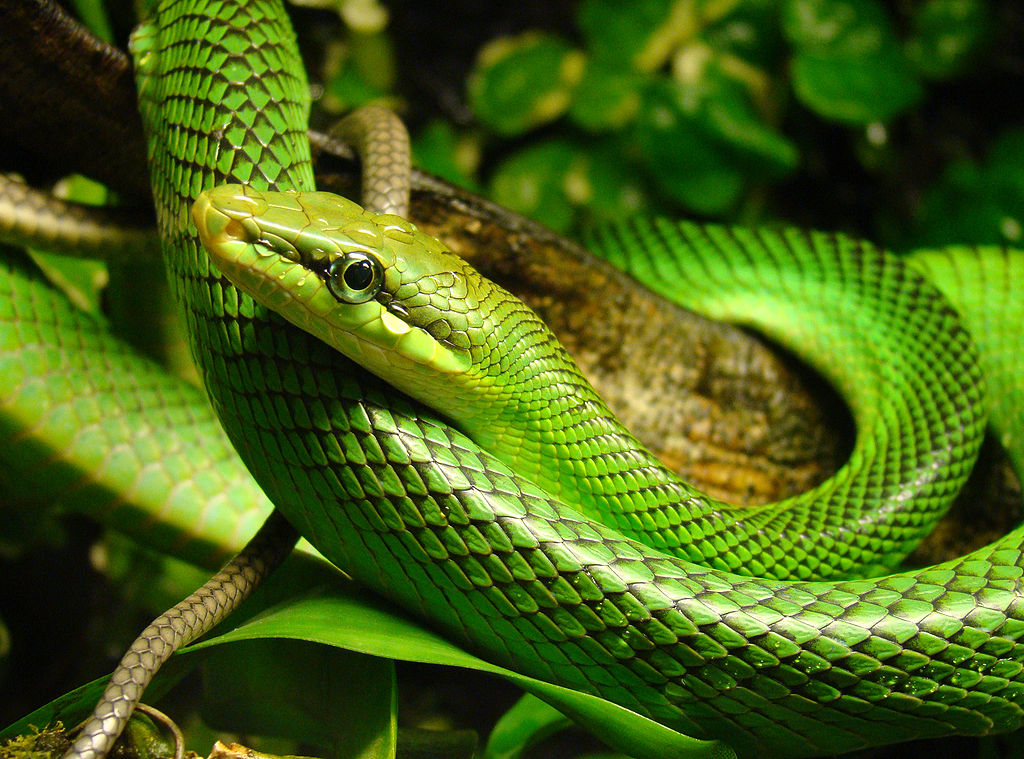
The reproductive biology of vine snakes adds another fascinating dimension to these remarkable reptiles. Unlike many snake species that lay eggs, most Ahaetulla species are ovoviviparous, meaning females retain eggs within their bodies until they hatch, giving birth to live young. A female vine snake typically produces 5-12 offspring after a gestation period of approximately three to four months, with breeding usually occurring during the rainy season when prey is most abundant. The newborn snakes emerge as miniature versions of adults, complete with the ability to flatten their bodies, though this skill develops fully as they mature. Young vine snakes measure about 20-30 centimeters at birth and are immediately independent, having to master hunting and camouflage techniques without parental guidance. Their growth rate is relatively rapid during the first year, slowing thereafter, with most individuals reaching sexual maturity at around 18-24 months of age. In the wild, these snakes typically live 7-10 years, though specimens in proper captive conditions have been known to survive up to 15 years.
Defense Beyond Disguise
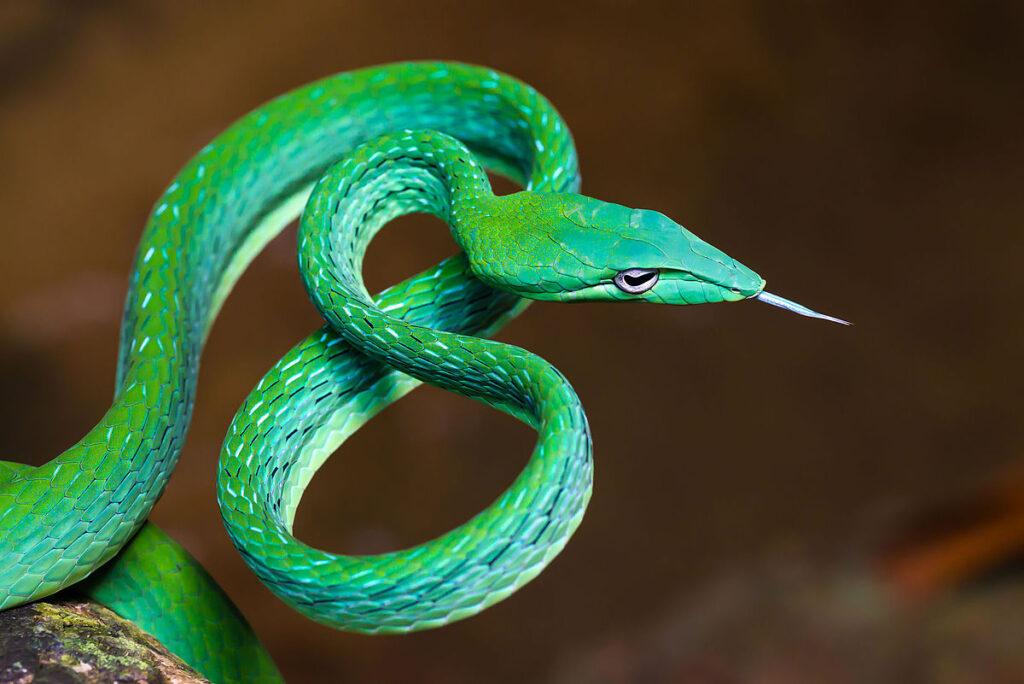
While the leaf-mimicking ability represents the vine snake’s primary defense strategy, these resourceful reptiles employ several additional tactics when their camouflage fails. When threatened, a vine snake will often enhance its intimidation display by inflating its throat and the anterior portion of its body, revealing previously hidden dark coloration between its scales that makes it appear larger and more threatening. If harassment continues, they may open their mouths wide, displaying a dark-colored oral cavity—a behavior known as gaping—which serves as a warning to potential predators. Some species will also flatten their heads into a triangular shape reminiscent of more dangerous vipers, creating confusion about their actual threat level. As a last resort, these generally docile snakes may strike defensively, though their rear-fanged venom delivery system makes them less dangerous to larger animals than front-fanged species. Their slender bodies also allow them remarkable maneuverability, enabling them to retreat through dense foliage where larger predators cannot follow, providing yet another layer of defense beyond their extraordinary camouflage.
Conservation Status and Threats
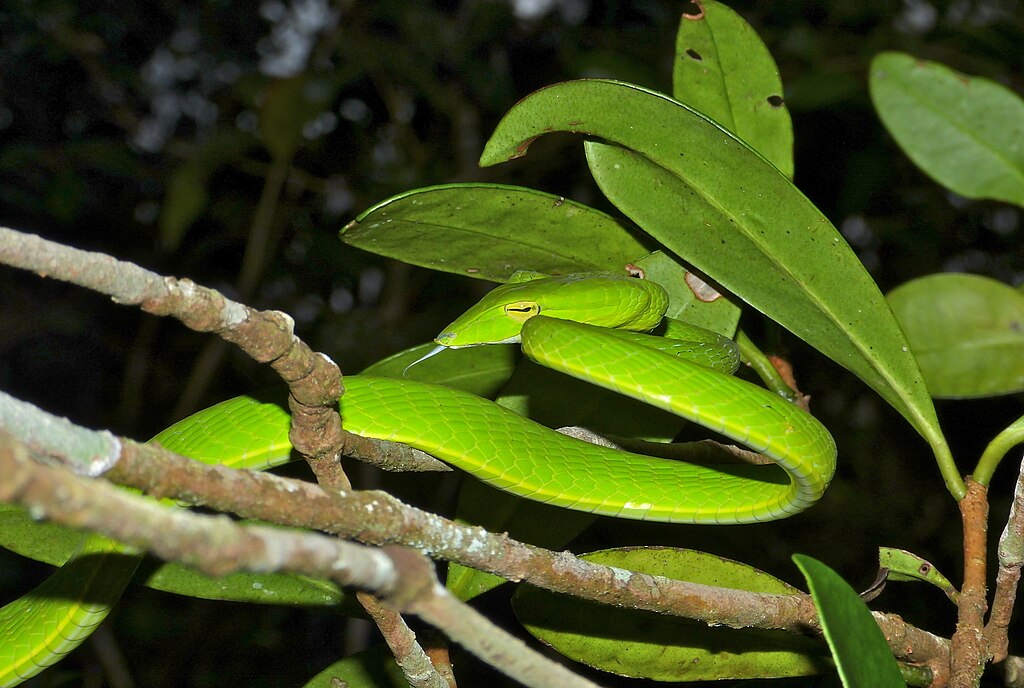
Despite their remarkable adaptations, vine snakes face increasing challenges in the modern world. While most species are currently listed as “Least Concern” on the IUCN Red List, population trends for many are decreasing due to habitat loss and fragmentation. The tropical forests these specialized reptiles depend on are disappearing at alarming rates due to agricultural expansion, logging, and urban development throughout Southeast Asia. Their specialized nature makes them particularly vulnerable to habitat changes, as they require specific forest structures to effectively employ their leaf-mimicking strategy. Additionally, vine snakes face threats from the international pet trade, where their unusual appearance and behaviors make them desirable to collectors. Climate change represents another looming threat, as alterations in temperature and precipitation patterns may disrupt the delicate balance of tropical forest ecosystems. Some isolated populations, particularly those on islands or in fragmented forest patches, may already be at risk of local extinction as their specialized habitats shrink below sustainable thresholds.
Cultural Significance and Human Relationships
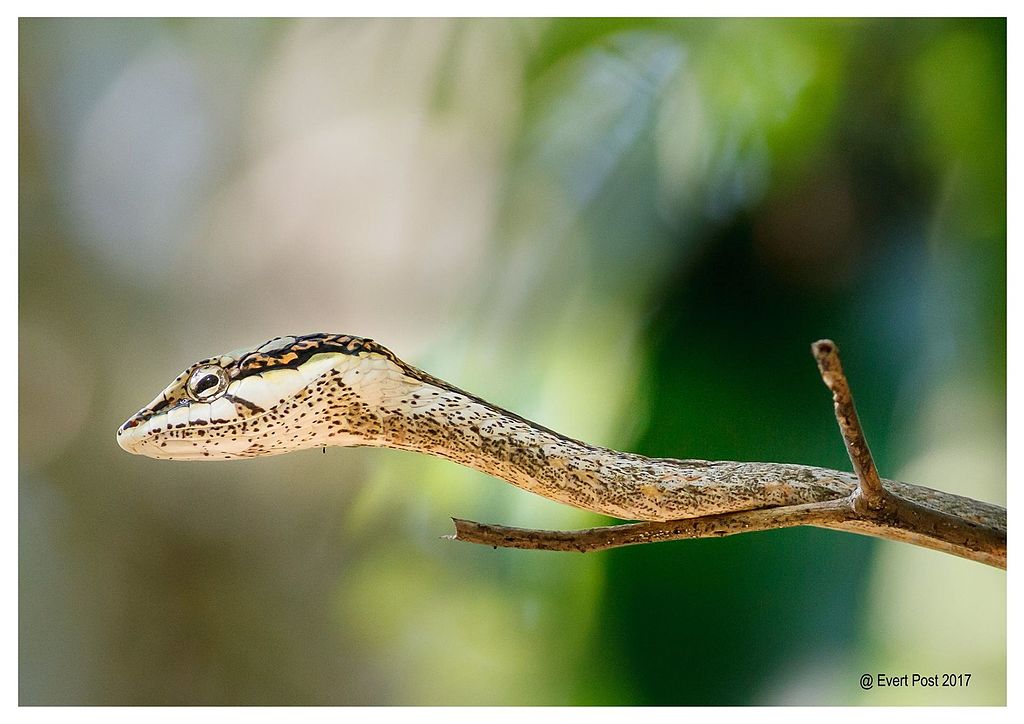
Throughout their range, vine snakes have woven themselves into the cultural tapestry of local communities. In parts of India and Southeast Asia, these snakes feature in folklore and traditional medicine, sometimes regarded as forest spirits due to their mysterious ability to “transform” between snake and leaf. Their non-aggressive nature and mild venom have generally resulted in more positive cultural associations compared to more dangerous snake species. Traditional ecological knowledge among indigenous forest communities often includes detailed understanding of vine snake behavior, with some groups considering sightings of these snakes as good omens related to agricultural fertility. In modern times, these remarkable reptiles have captured public imagination through nature documentaries and social media, where videos of their leaf-mimicking behavior frequently go viral, helping to foster appreciation for snake conservation. However, misconceptions and ophidiophobia (fear of snakes) still lead to unnecessary killing when these harmless creatures are encountered near human habitations, highlighting the need for continued education about their ecological importance and minimal threat to humans.
Scientific Research and Recent Discoveries

The vine snake continues to intrigue scientists, with recent research yielding fascinating insights into their biology. Advanced imaging technologies have allowed researchers to document the precise muscular actions involved in the flattening process, revealing a complex interplay of specialized muscle groups that work in concert to achieve the leaf-like shape. Genetic studies have uncovered surprising diversity within the Ahaetulla genus, with several cryptic species recently identified that appear nearly identical but are genetically distinct, suggesting even more specialized adaptations than previously recognized. Behavioral ecologists have documented sophisticated hunting strategies that vary based on prey type, with some individuals demonstrating apparent learning and problem-solving abilities. A 2019 study revealed that these snakes can adjust their camouflage strategy based on seasonal changes in their environment, altering their positioning and the degree of body flattening to match the predominant leaf types available during different times of year. Perhaps most intriguingly, research into their mild venom has identified compounds with potential medical applications, including components that might aid in the development of new pain management drugs.
Captive Care and Responsible Ownership
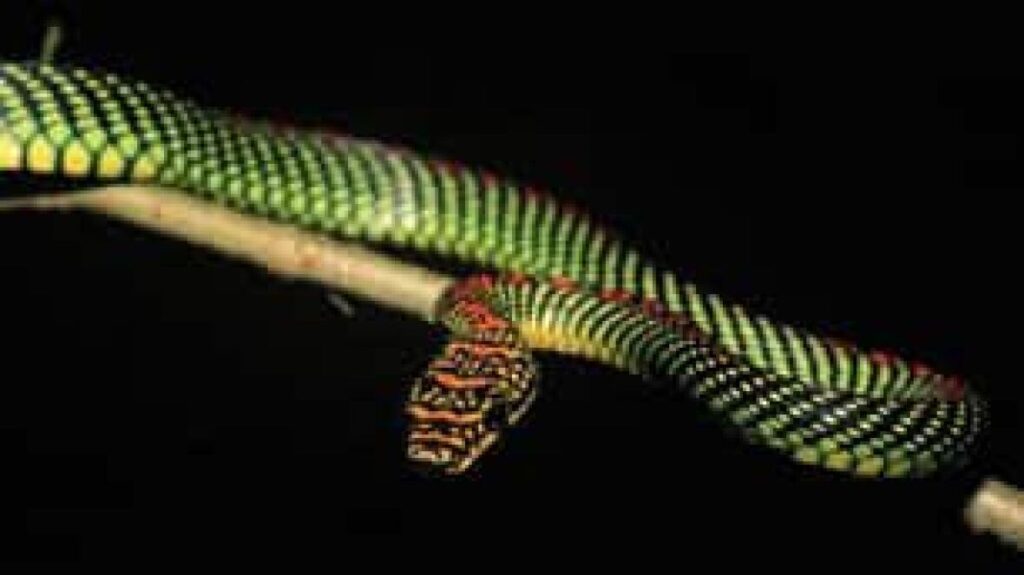
For those fascinated by these remarkable reptiles, it’s important to note that vine snakes present significant challenges in captivity and should only be kept by experienced herpetologists. Their specialized dietary needs—many will only accept live birds or lizards—make them unsuitable for novice keepers and raise ethical concerns about feeding practices. Properly housing vine snakes requires spacious, tall enclosures that mimic their arboreal lifestyle, with complex branching structures, appropriate humidity levels (typically 70-80%), and temperatures carefully maintained between 75-85°F (24-29°C). Responsible ownership begins with ensuring specimens are legally and ethically sourced, preferably from captive breeding programs rather than wild collection, which can harm natural populations. Potential keepers should research local regulations thoroughly, as many jurisdictions restrict ownership of even mildly venomous species. Those considering these snakes should commit to their potential 15-year lifespan and be prepared for specialized veterinary care when needed. For most snake enthusiasts, appreciating these magnificent creatures through nature documentaries, ethical wildlife photography, and support for conservation organizations represents the most responsible approach to admiring their remarkable adaptations.
Conclusion
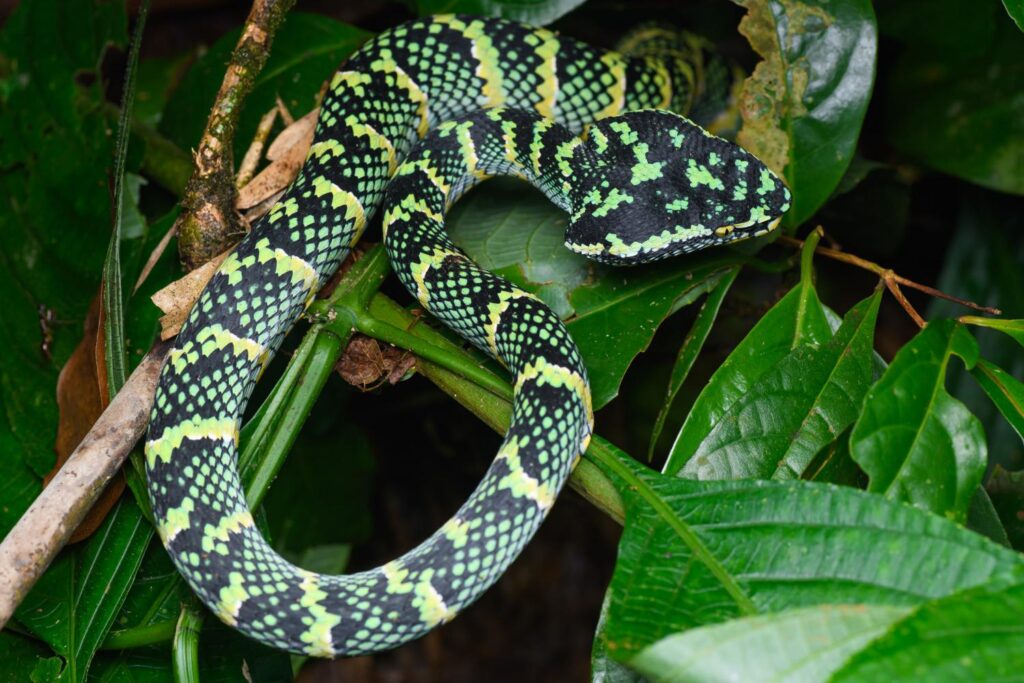
The Asian vine snake stands as a remarkable testament to the intricate adaptations that have evolved in the natural world. Its ability to transform its body into a convincing leaf shape represents one of nature’s most sophisticated examples of camouflage—a perfect harmony of form, function, and behavior that has developed over millions of years of evolution. As we continue to explore and understand these fascinating creatures, they remind us of the incredible diversity of strategies that organisms have developed to survive in competitive environments. In a world where habitats are rapidly changing due to human activity, the specialized nature of these remarkable snakes also serves as a poignant reminder of what we stand to lose if we fail to protect the complex ecosystems that nurture such extraordinary adaptations. The vine snake’s leaf-mimicking ability isn’t just a biological curiosity—it’s a masterpiece of natural engineering that deserves both our admiration and our protection.

